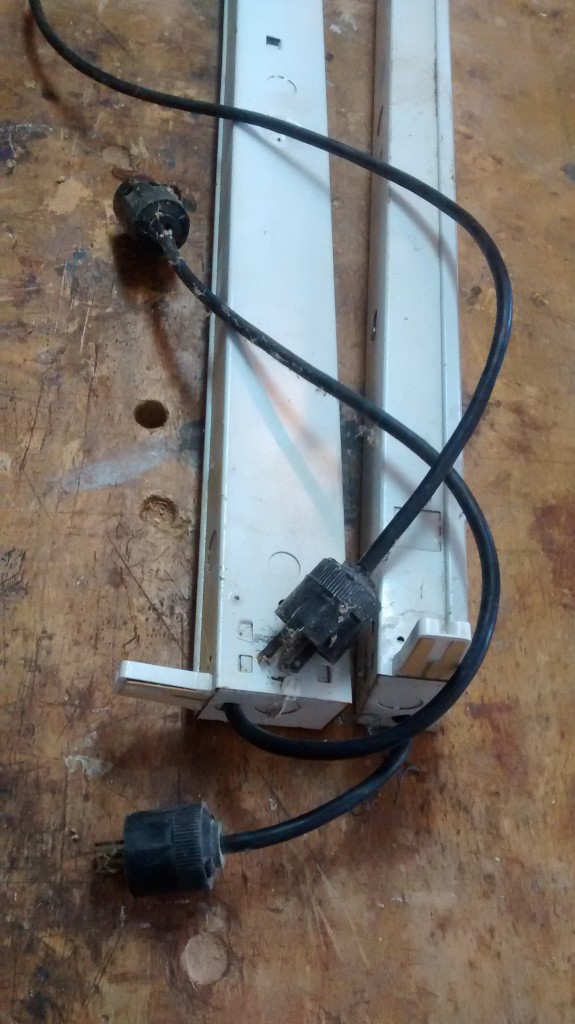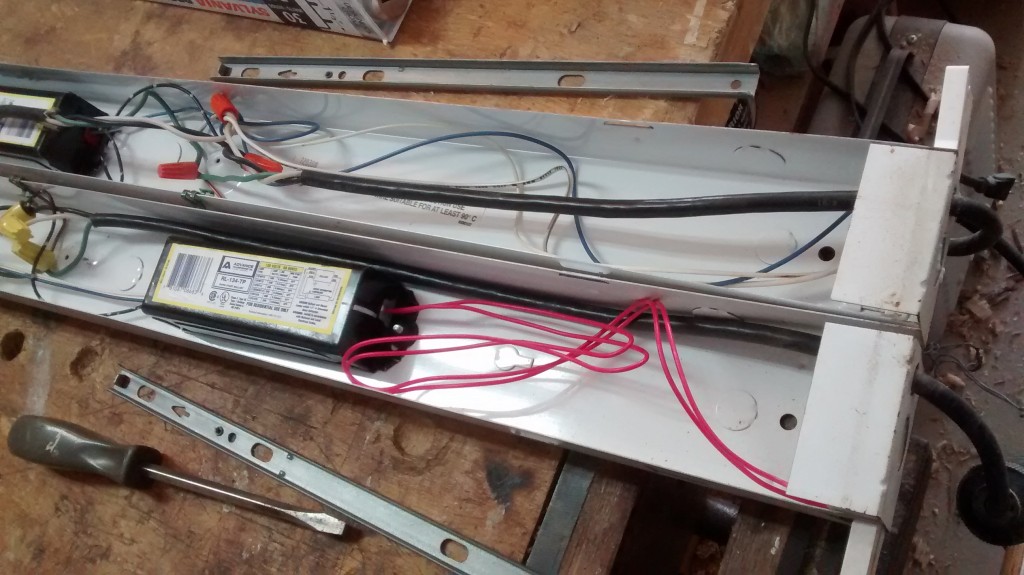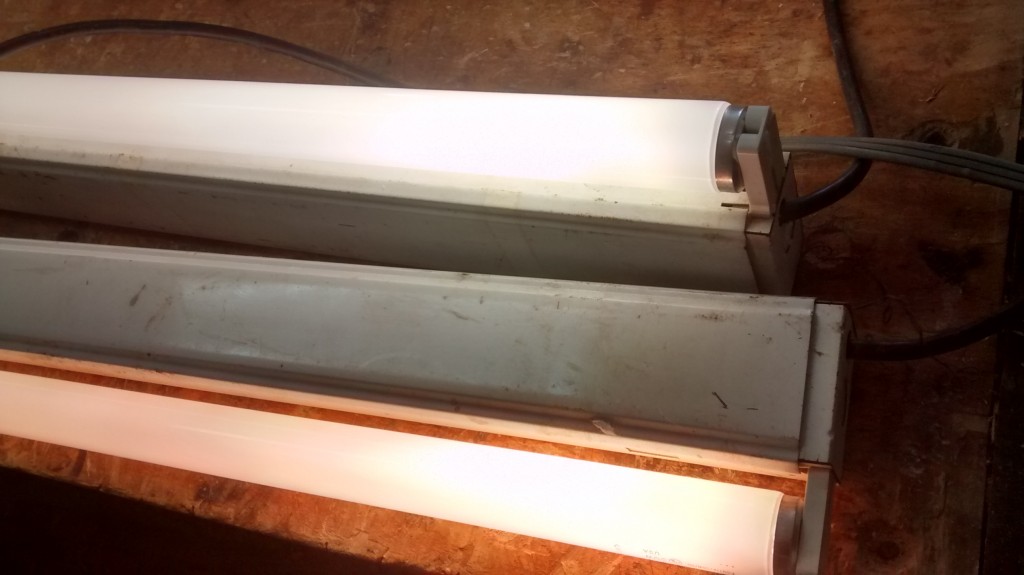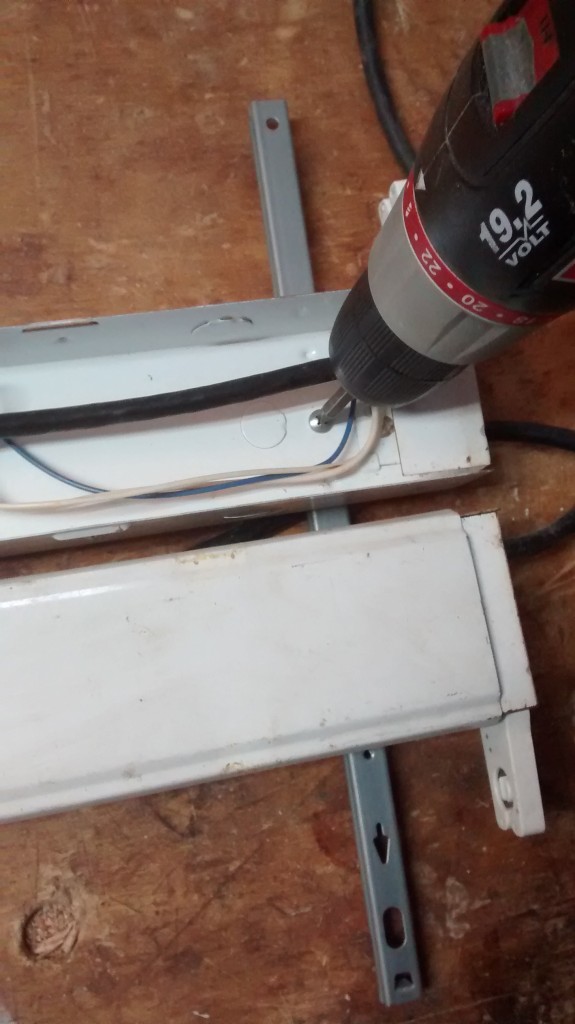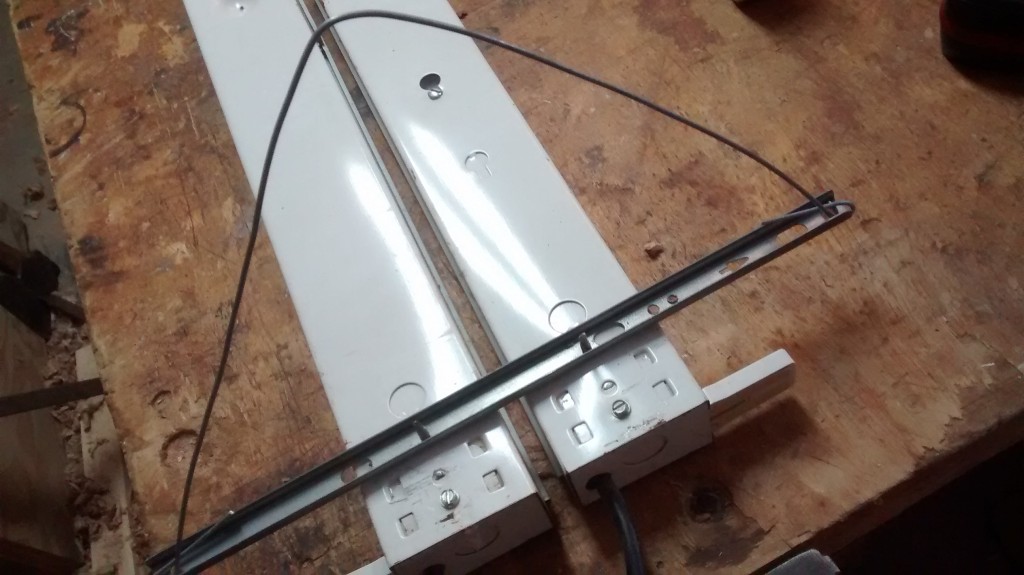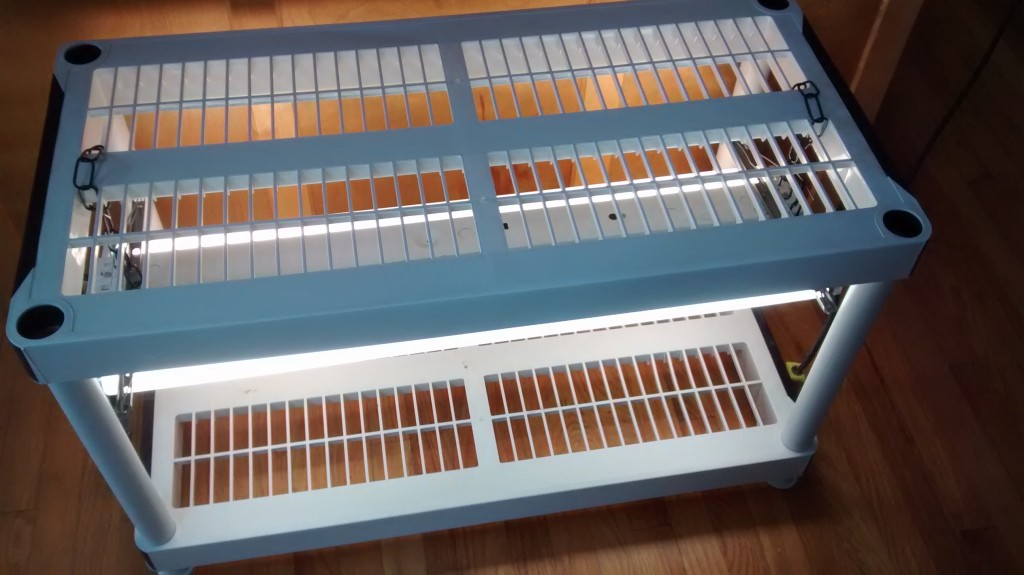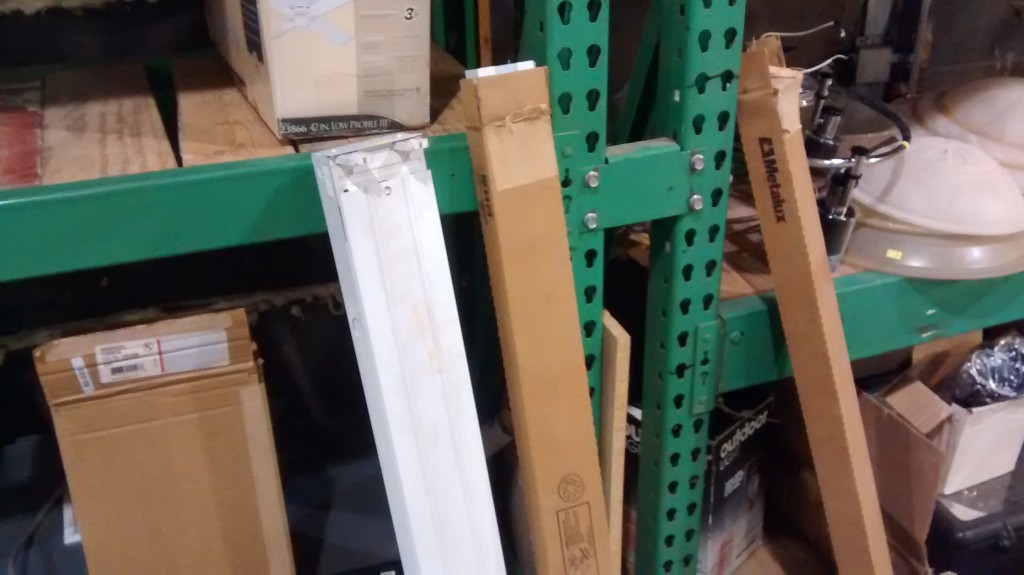There was a small project that I had to get done this week. I needed to add another bank of lights in my seed starting area.
You would think that after so many years as a professional gardener my seed starting room would look like some kind of laboratory complete with stainless steel racks, electronic equipment and all other sorts of really cool stuff. A few years ago when I was starting many thousands of plants, that was pretty much the case. Now days, I’m gardening at a much smaller scale.
My seed starting area is probably much simpler than what the average serious garden has. My general rule for these types of things is to not buy anything fancy or brand new if I can make it myself without sacrificing functionality.
I have a a pair of three foot, single bulb fluorescent light fixtures that I bought for a couple of bucks at a garage sale last fall. My plan was to attach them together to make a single assembly that I can easily adjust up and down depending on the growth of the seedlings.
There were no florescent tubes when I got them. That actually was a good thing since, over time, the amount of light florescent bulbs produce dramatically diminishes over time. I didn’t have to dispose of any used bulbs which saved me some hassle. The bad thing was that I only had the seller’s word for it that the fixtures worked.
The first thing I did was open up the case to inspect the innards to be sure there were no wires shorting that could be an electrical hazard — they both looked sound.
Next I tested them with my new bulbs and sure enough, they lit up nice and bright.
Fixtures like these usually have pre-drilled holes that are used for mounting onto various surfaces, these were no different. I had some metal drawer brackets in my inventory of useful stuff that I saved from an old dresser. They were the perfect size for joining the two fixtures together.
I used self-tapping sheet metal screws to attach the brackets to the light fixtures.
I bent pieces of heavy-duty fencing wire to make hangers for each end of the fixture assembly.
The assembly is hanging by leftover ceiling light chain from a section of shelving that someone gave to me.
Even if you don’t have parts like I had laying around, recycling center that sell building materials often have fixtures, shelves and other parts for sale at very reasonable prices. I noticed while visiting Recycle Ann Arbor today that they had five nearly new florescent fixtures in stock.
For a very modest investment in cash and time I ended up with an additional seedling grow light.
Bob
